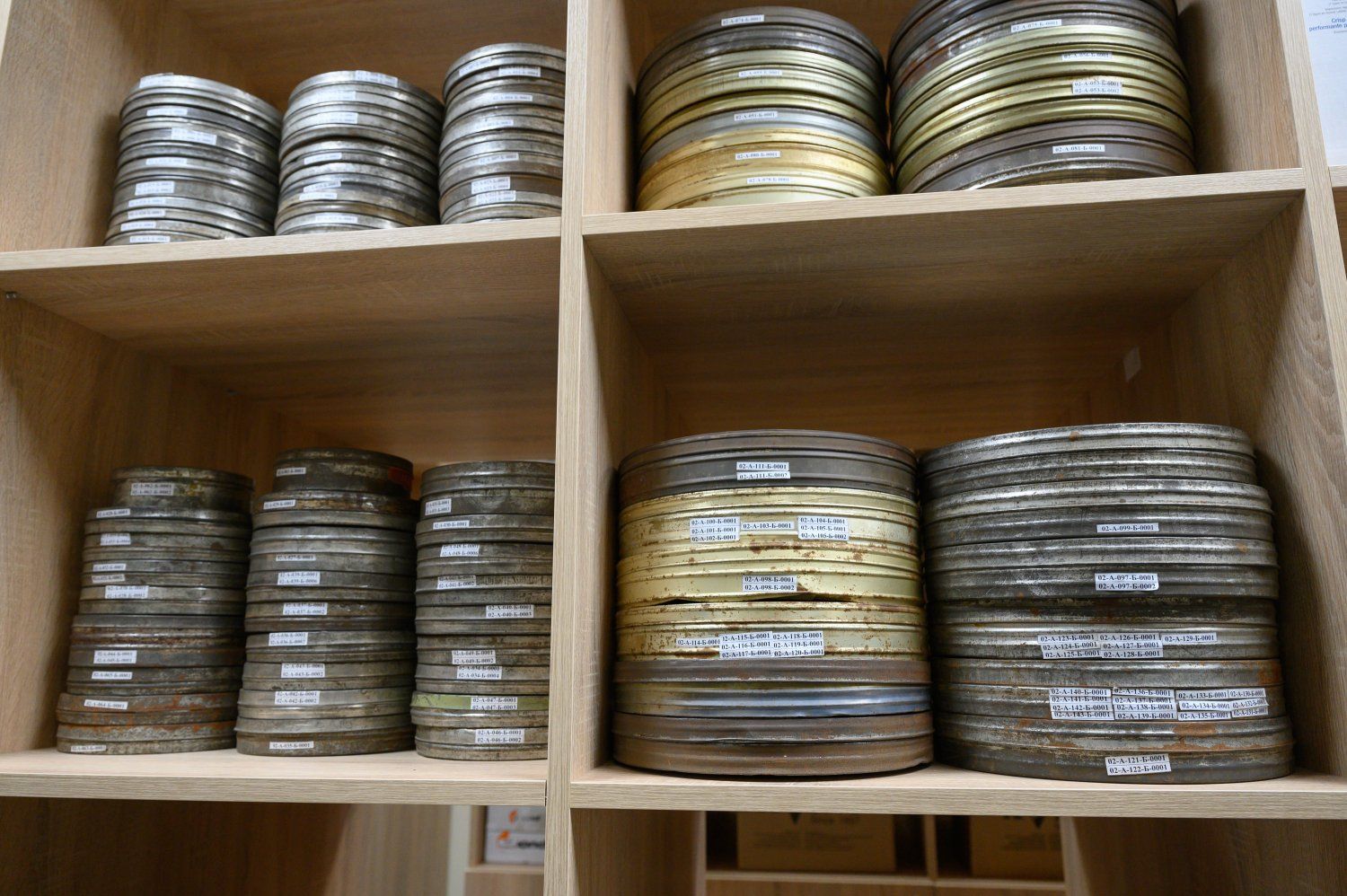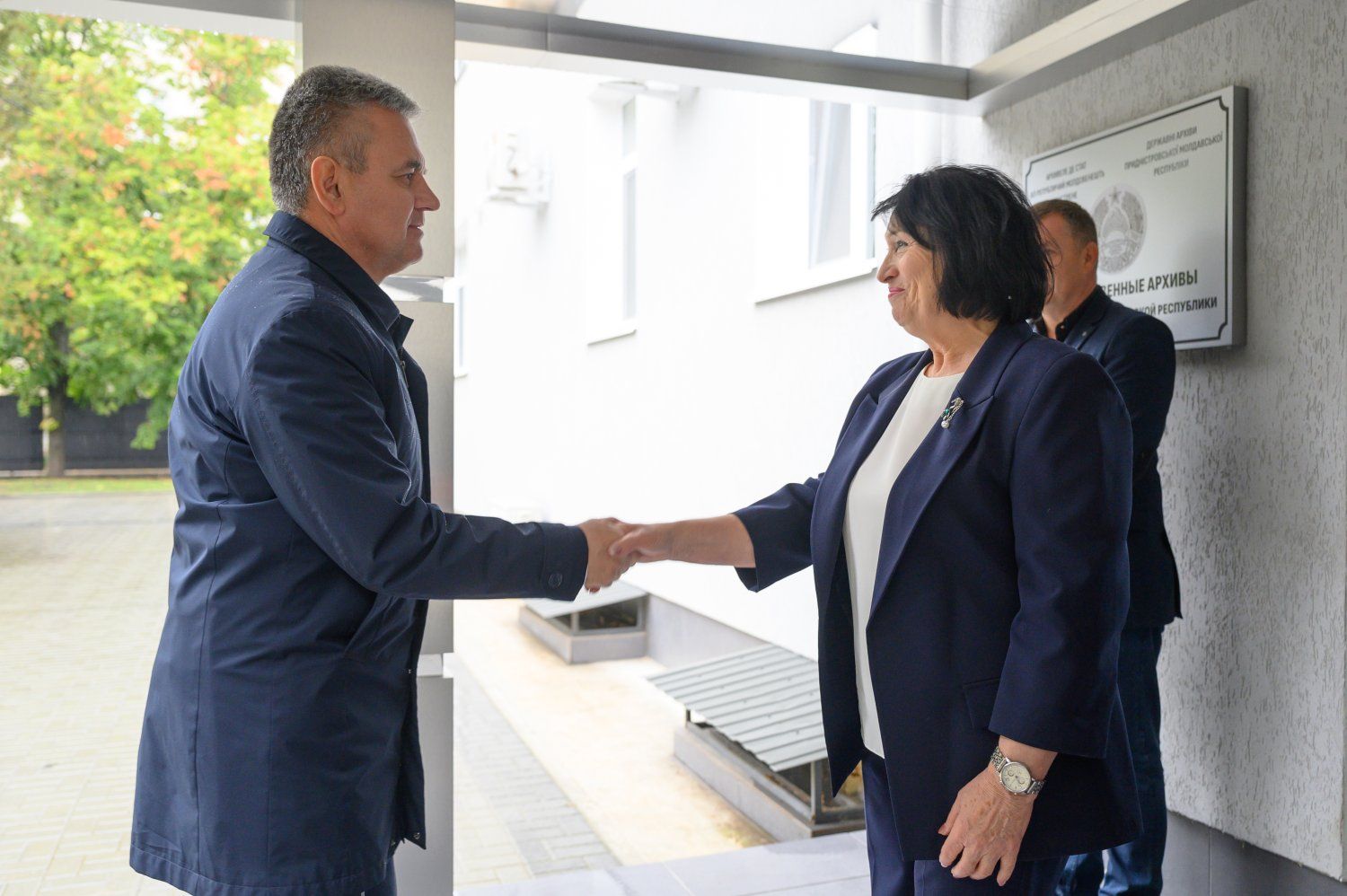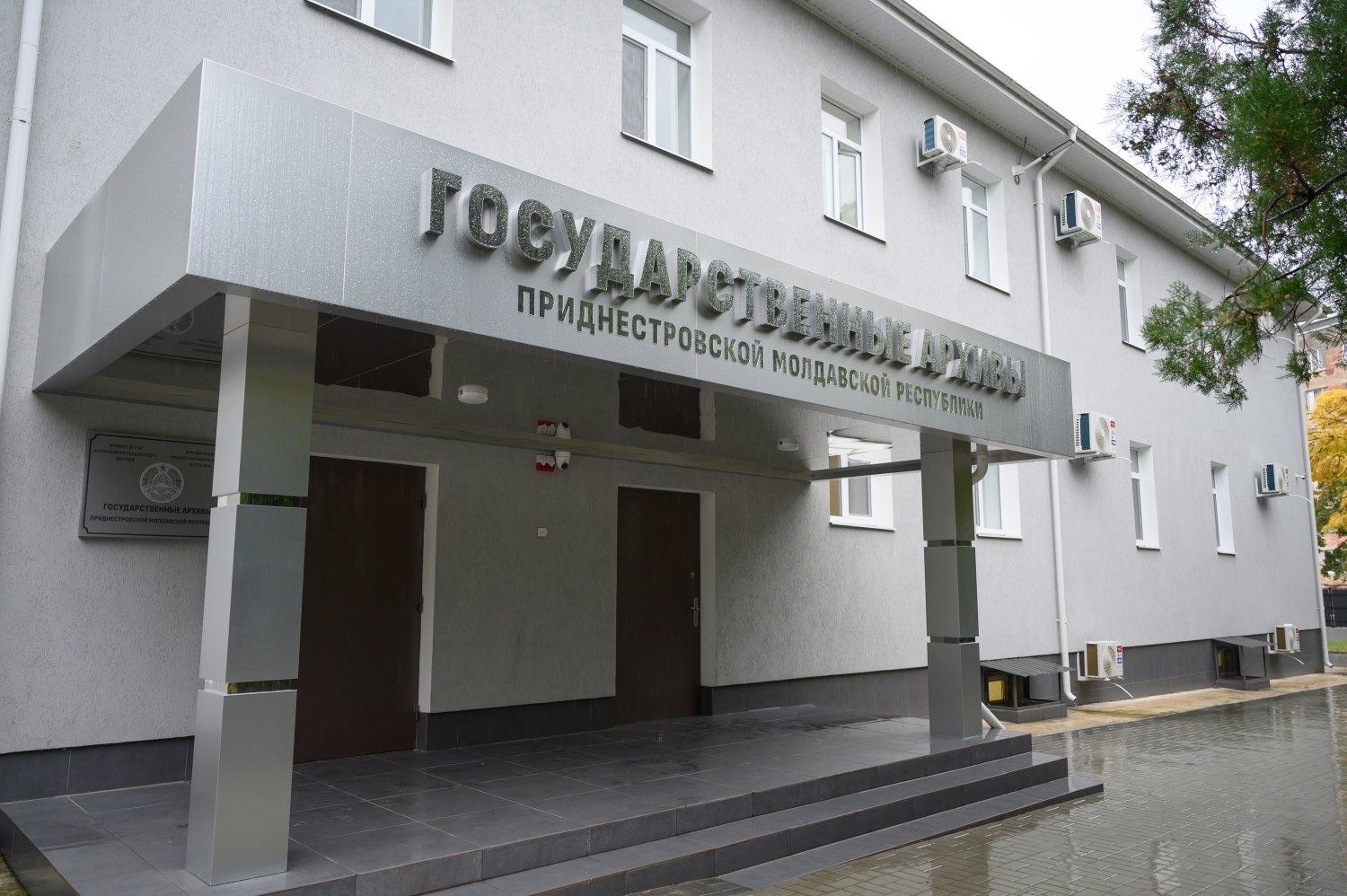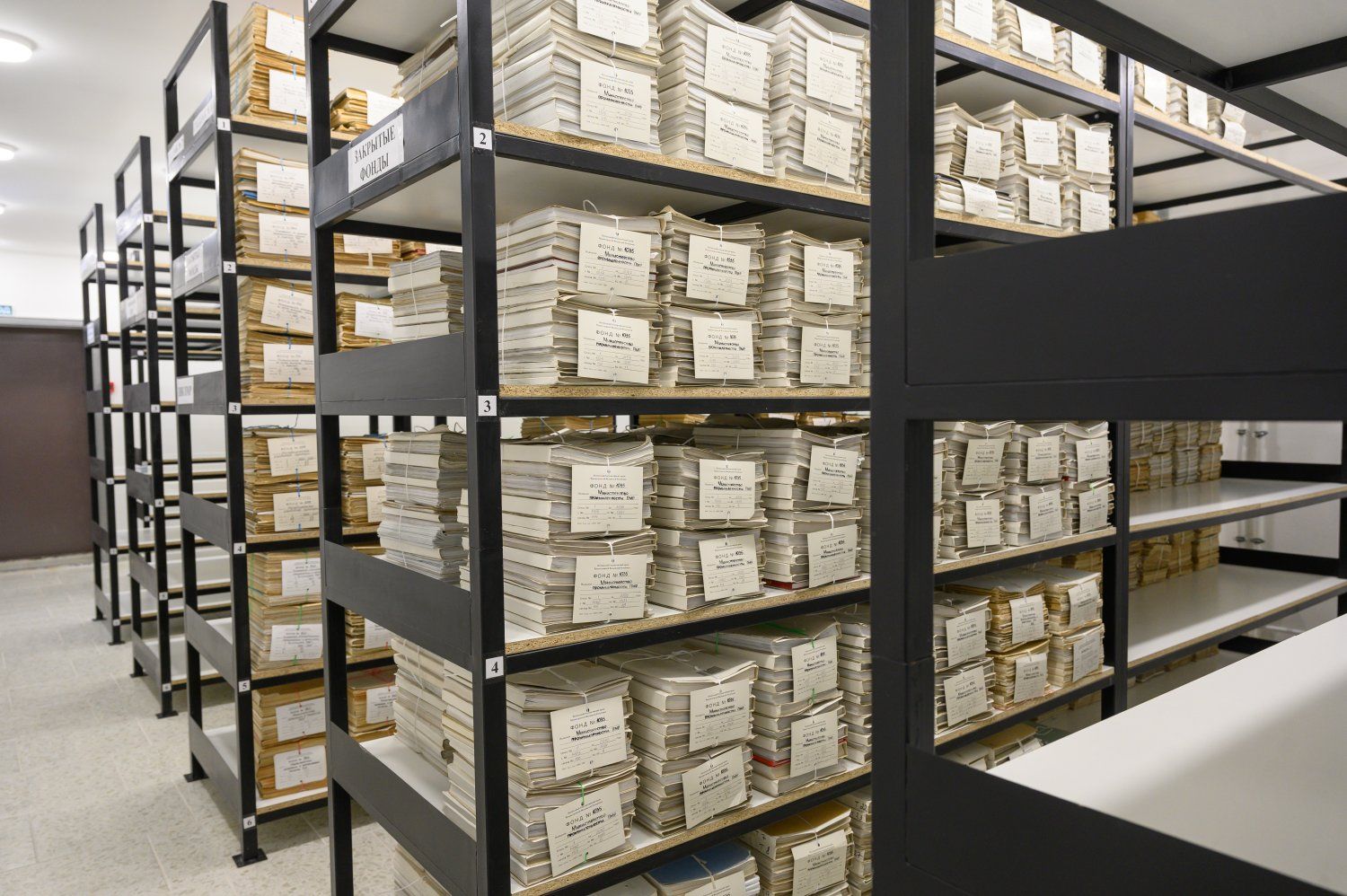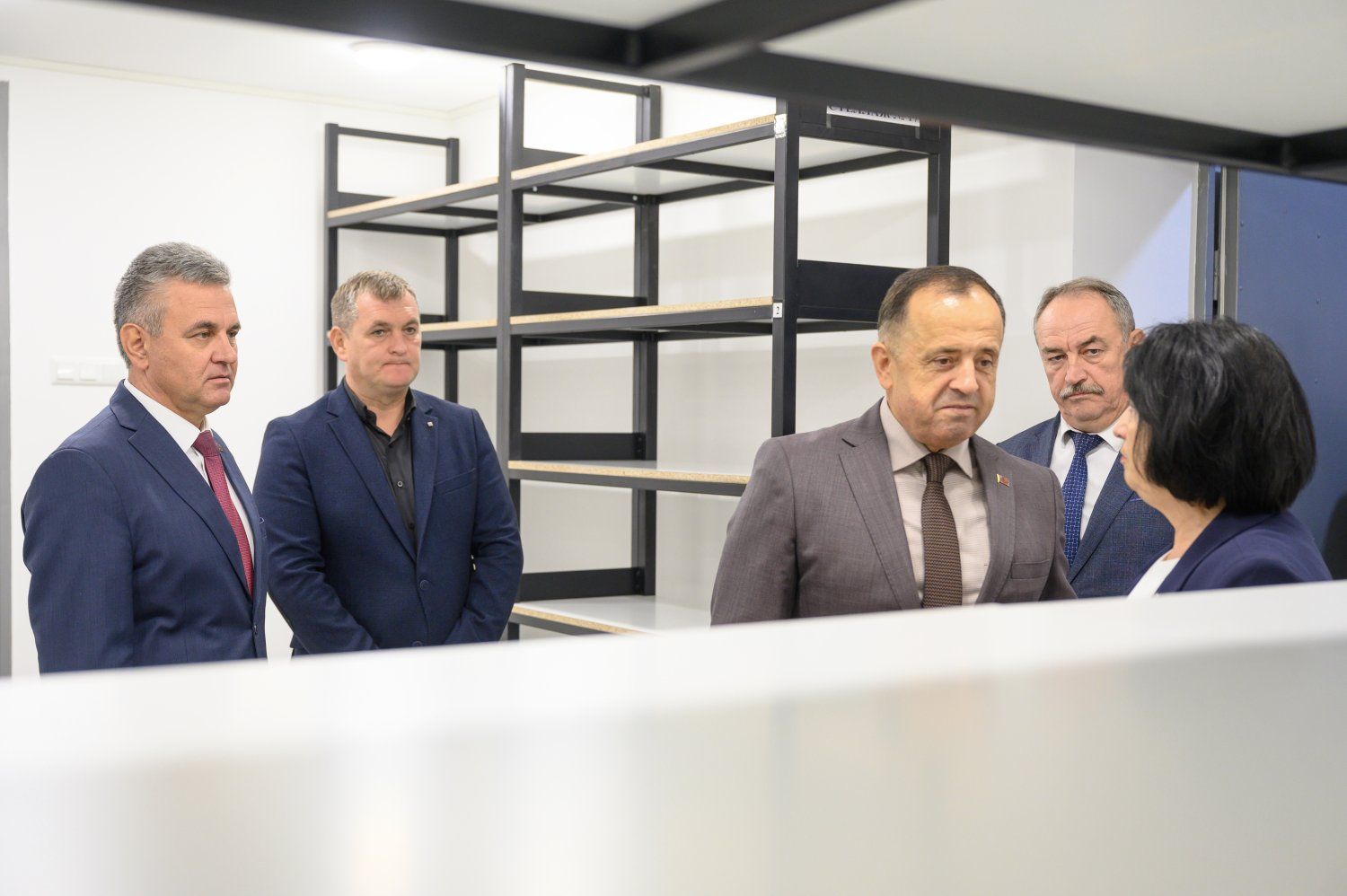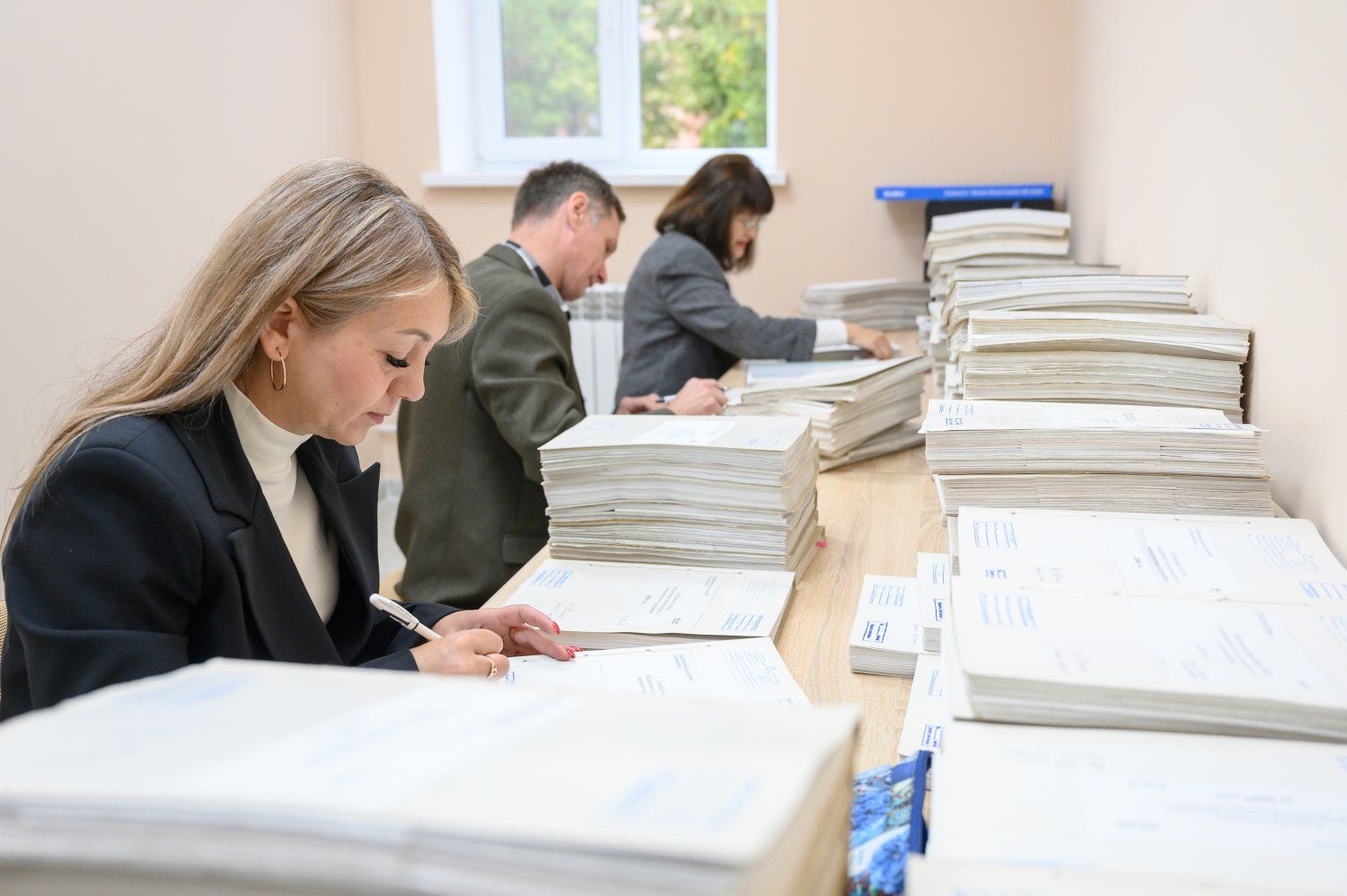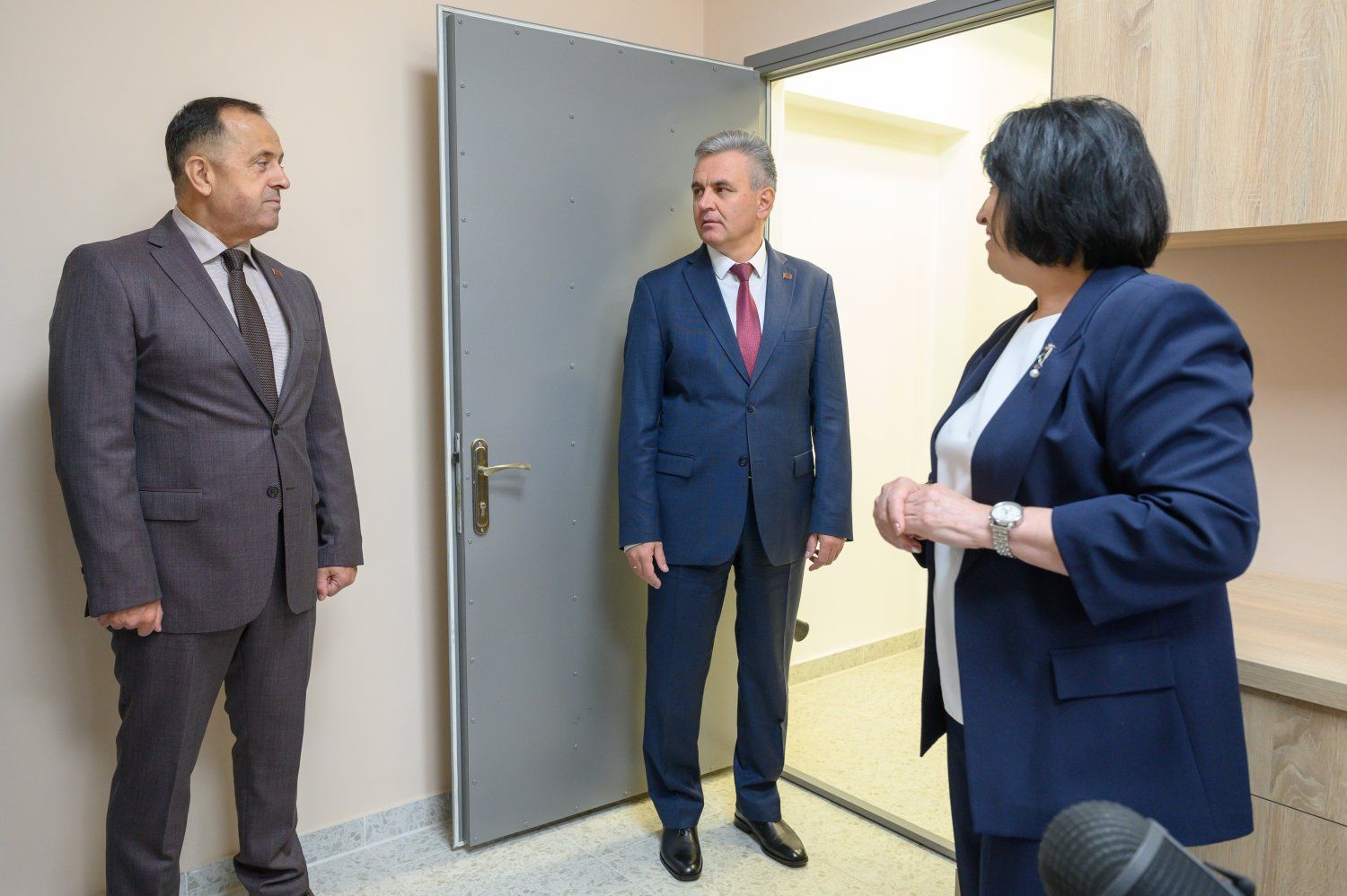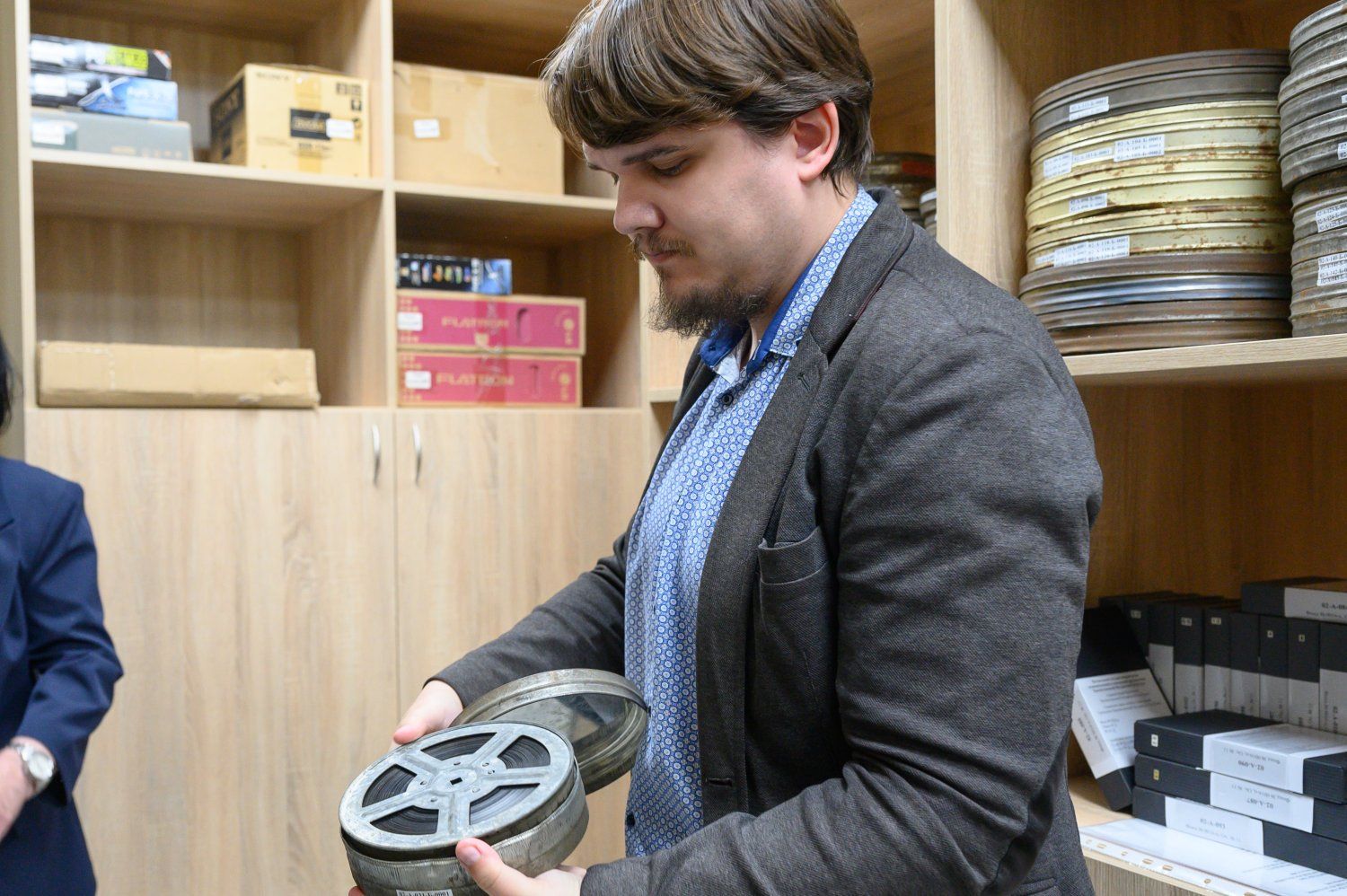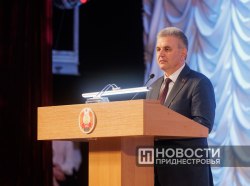The State Service for Documentation and Archives Management of the PMR has been located in a new building for a year – renovated, specially furnished, and equipped to meet its functional needs. The President inspected the development of the updated infrastructure today. Vadim Krasnoselsky was accompanied by Chairman of the PMR Government Alexander Rozenberg and Head of the legislative branch, Alexander Korshunov. Zinaida Todorashko, Head of the State Service for Documentation and Archives Management, and the heads of the service's departments reported on the work accomplished. It was recalled during the discussion, that the state archives had been waiting for decades to be provided with appropriate conditions. The republic's leadership was thanked for implementing a project that is significant both for its staff and for the country as a whole. The extensive work carried out to preserve Pridnestrovian history was discussed. The project involves not only the development of archives, but also the creation of a museum quarter in Tiraspol, a military-historical memorial complex in Bendery, a memorial in Dubossary, a museum at PSU, the placement of a specialized faculty in the main building of the state university, introducing schoolchildren and students to museum and excursion culture, the holding of open history lessons by the Head of State, and many other diverse events.

Zinaida Todorashko explained during the inspection tour that the building (a former kindergarten) is two stories high, but the presence of a usable basement effectively makes it three stories. The building is designed to accommodate one million storage units: equally divided between paper and other media. Its space according to preliminary estimates is sufficient to accommodate and ensure the secure storage of materials dating from 1990 to the mid-21st century – that is, a potential coverage of another 25 years. Soviet-era documentation and the Tiraspol archive are housed separately in a different building.
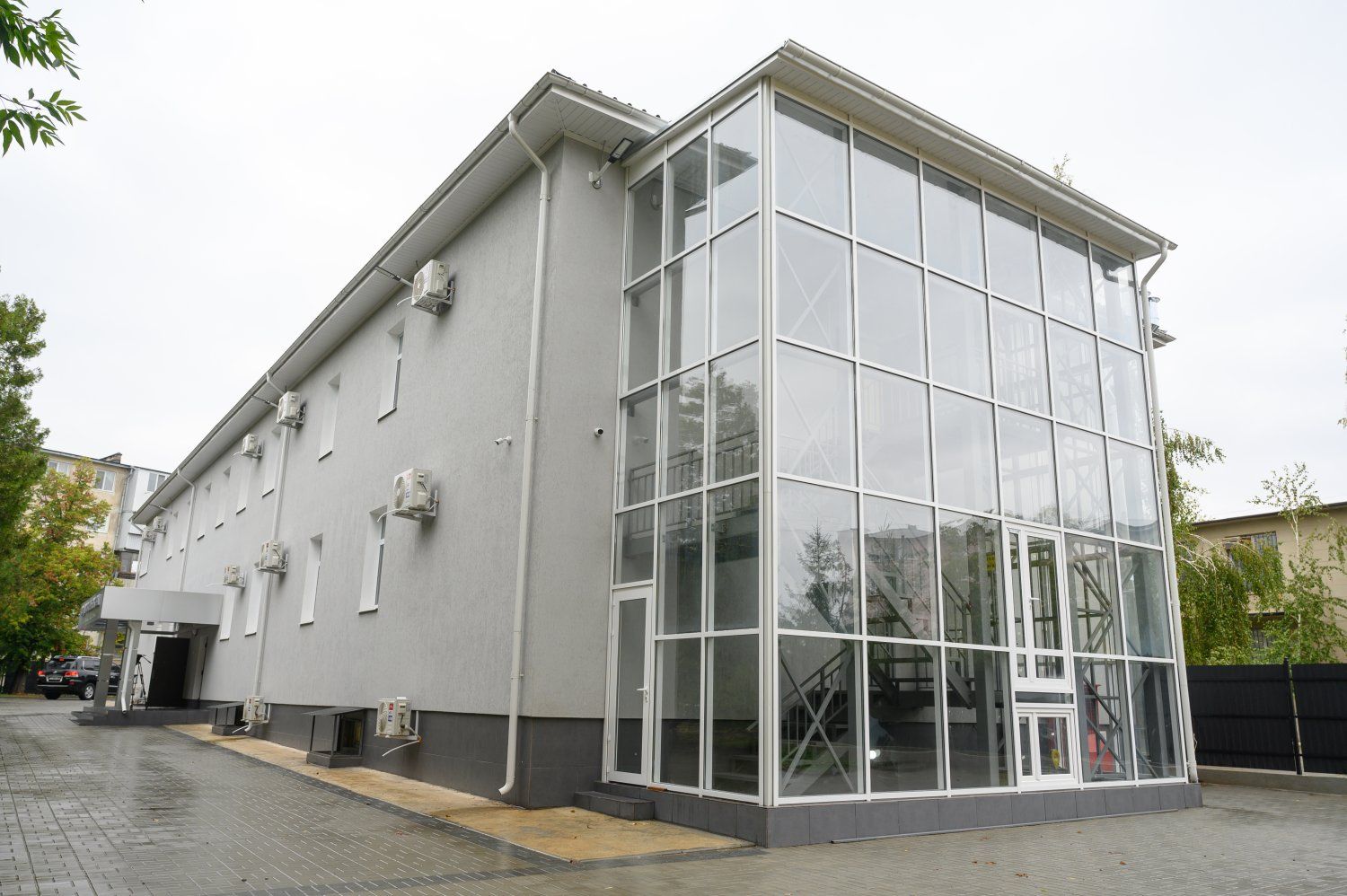
Vadim Krasnoselsky asked about staffing. According to the Head of the State Service for Documentation and Archives Management, the team is comprised of specialists with backgrounds in history, law, and philology. Qualified engineers and IT professionals have been recruited in addition to work with non-paper-based data. The President was told how the photo and film archives were assembled, for example. Unique footage was stored in disparate locations, often in unacceptable conditions. Of the thousands of reels collected, about a hundred were saved. They are not only being digitized, but every effort is being made to preserve the originals. There is an idea to launch an educational project called "Archive Cinema" to make footage from past years accessible to a wider audience. Projectors are needed to work with such sources of information. Other plans, projects, and ideas aimed at preserving historical heritage were discussed as well.
